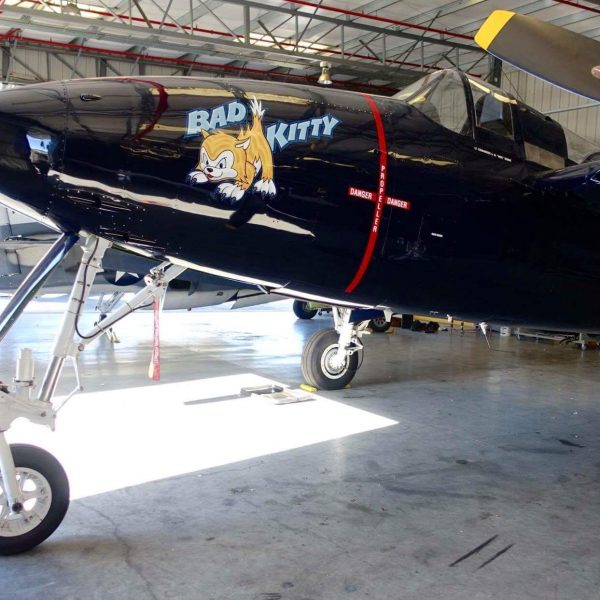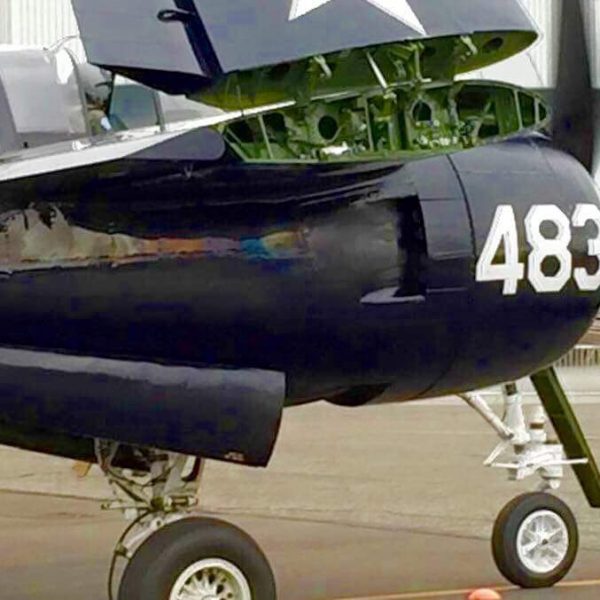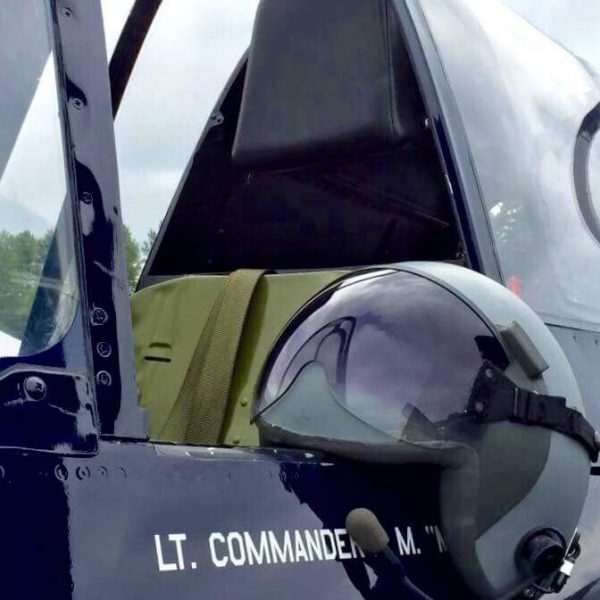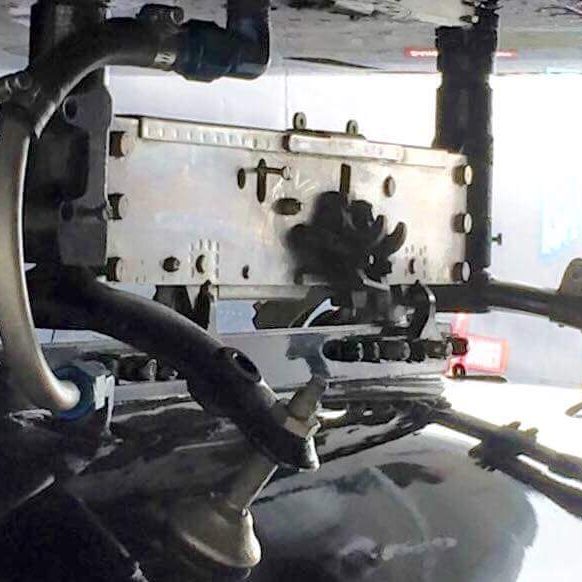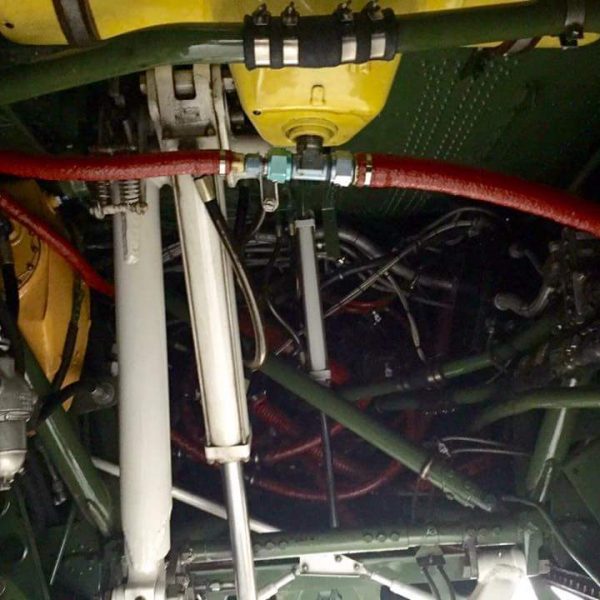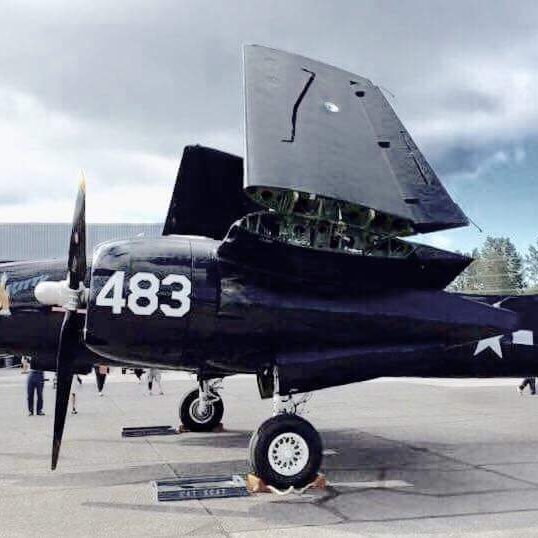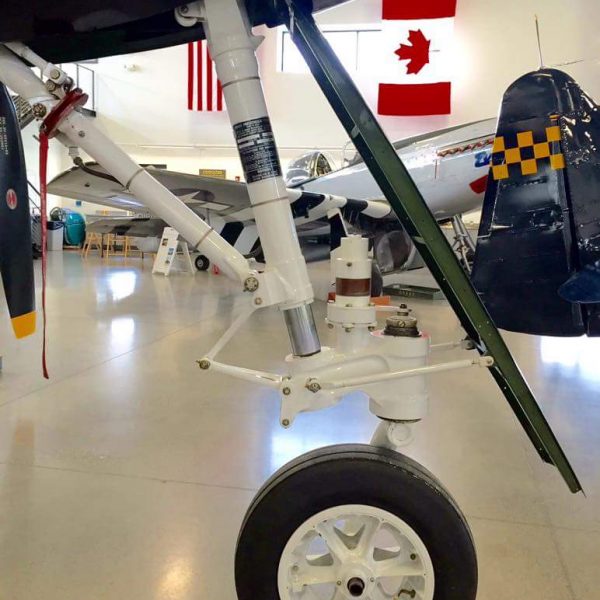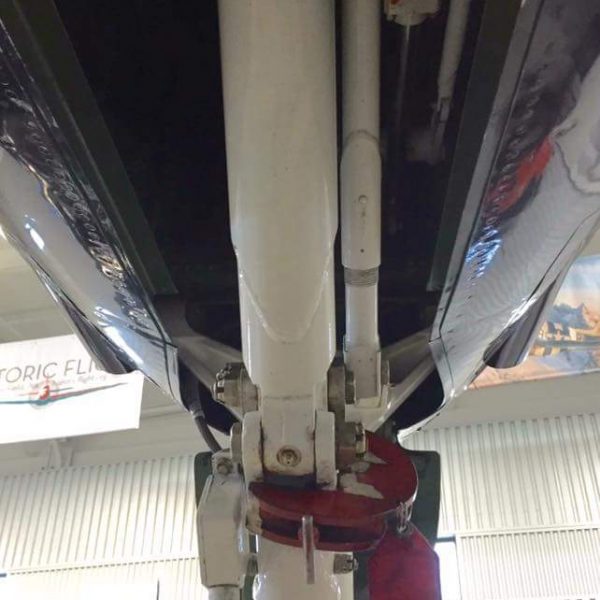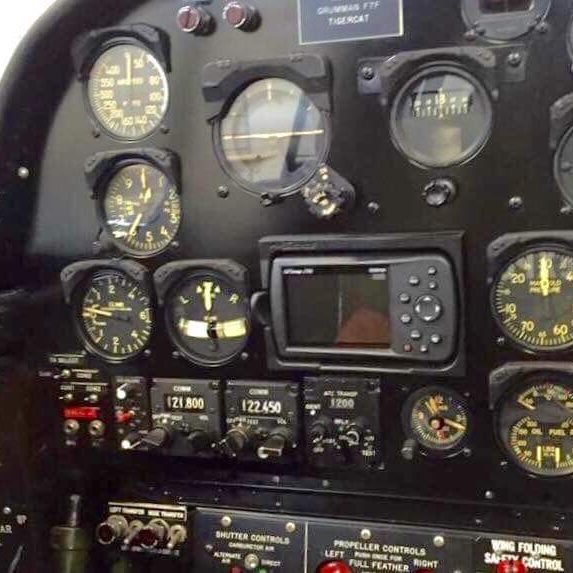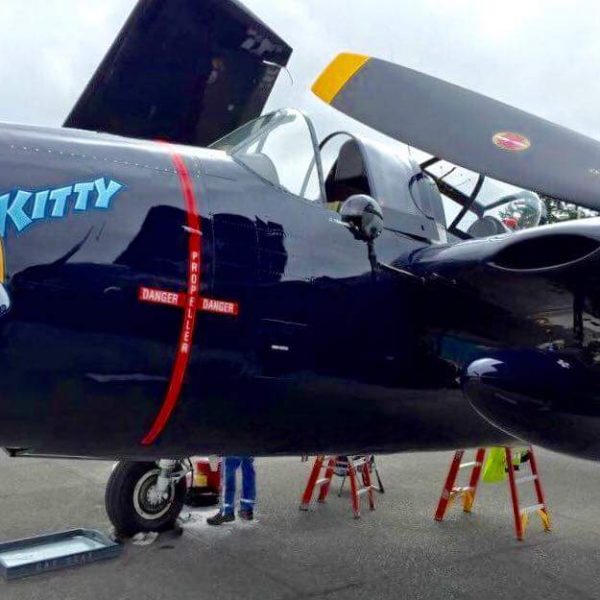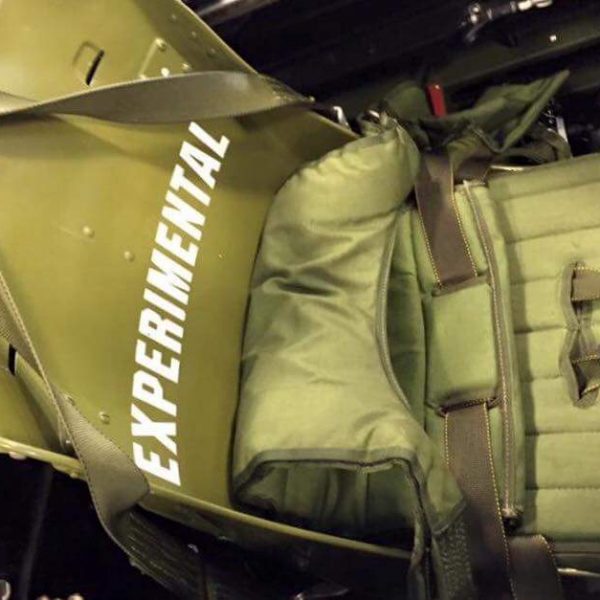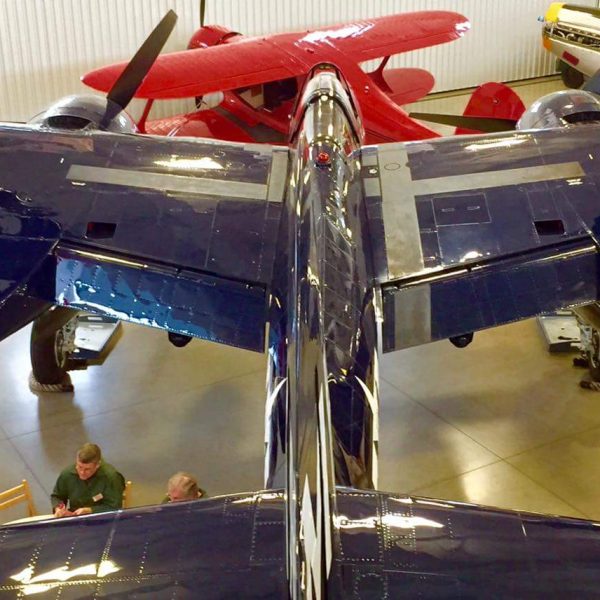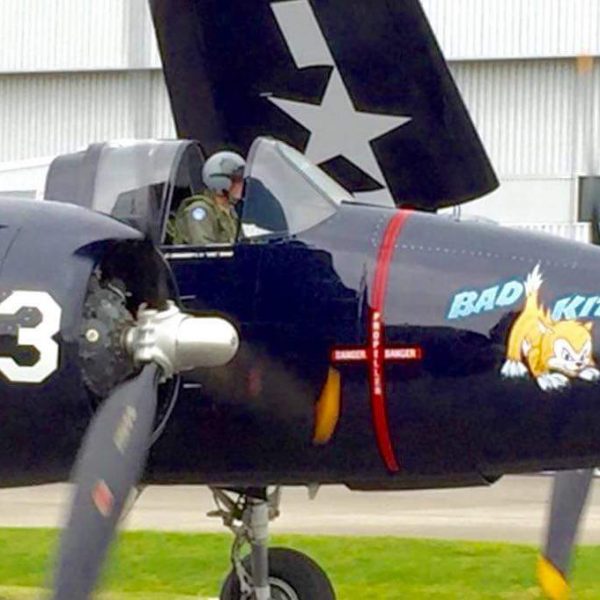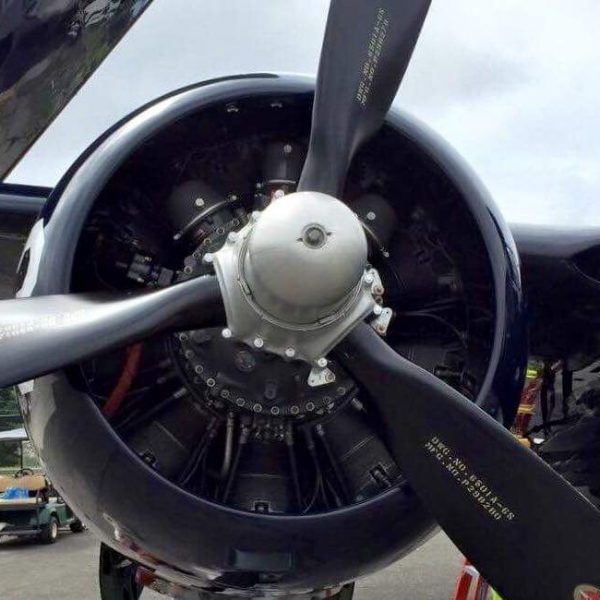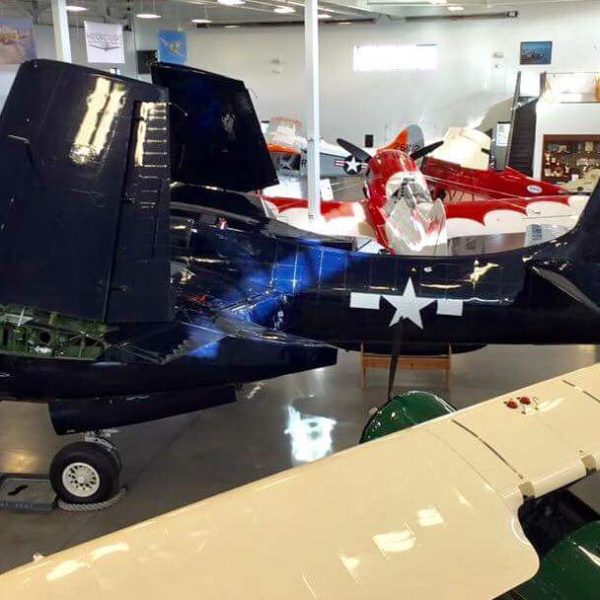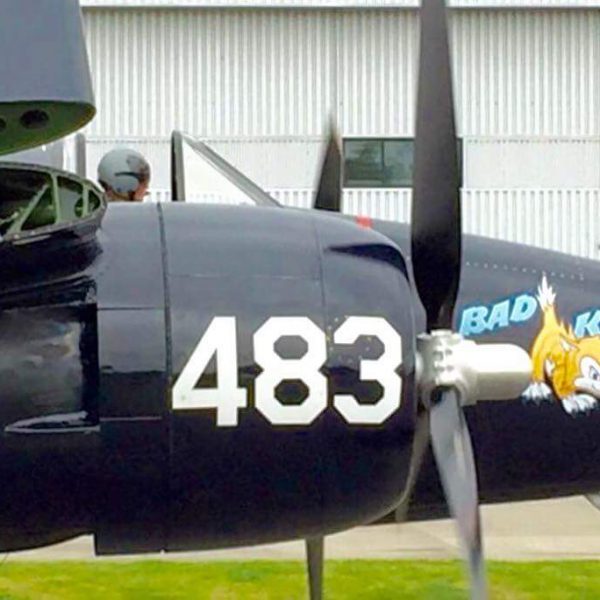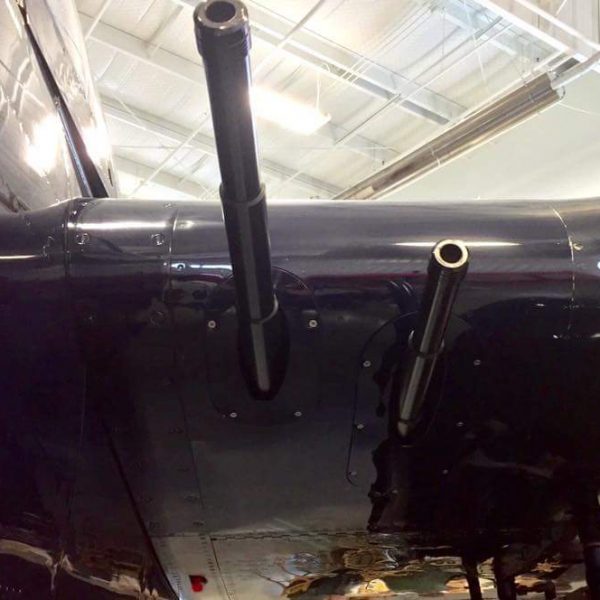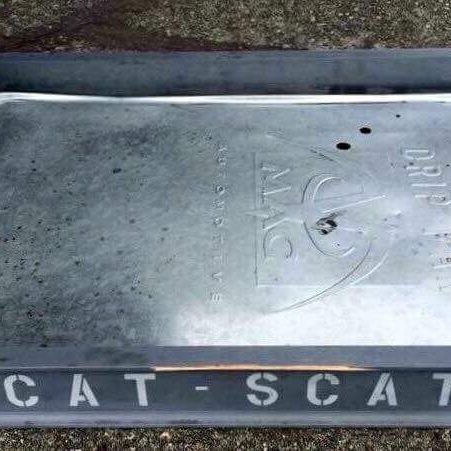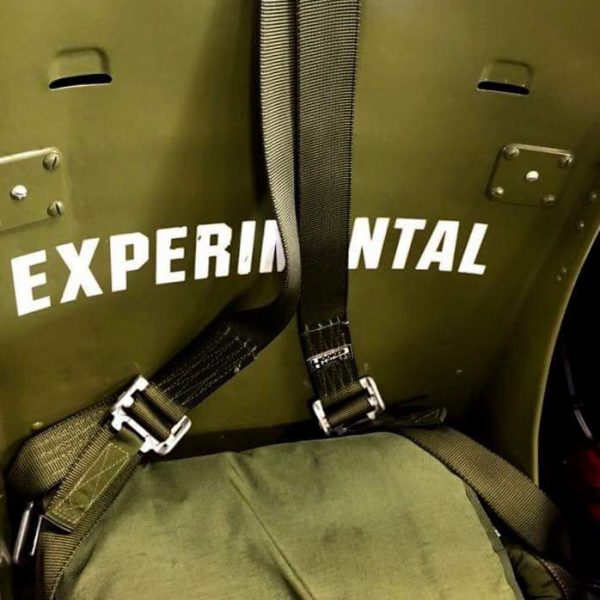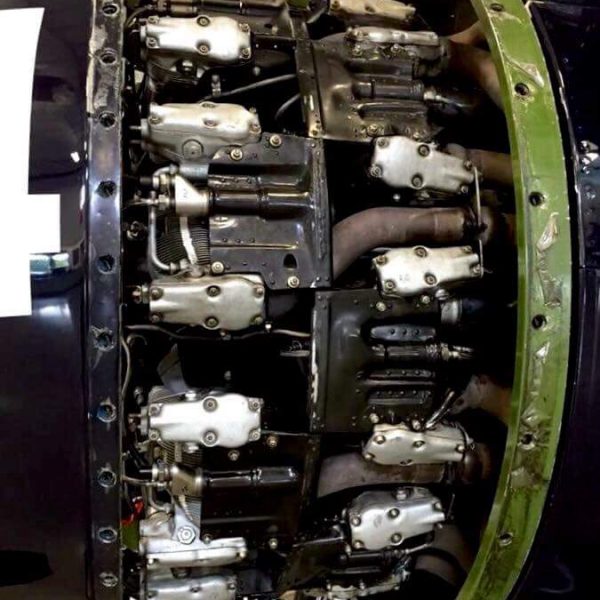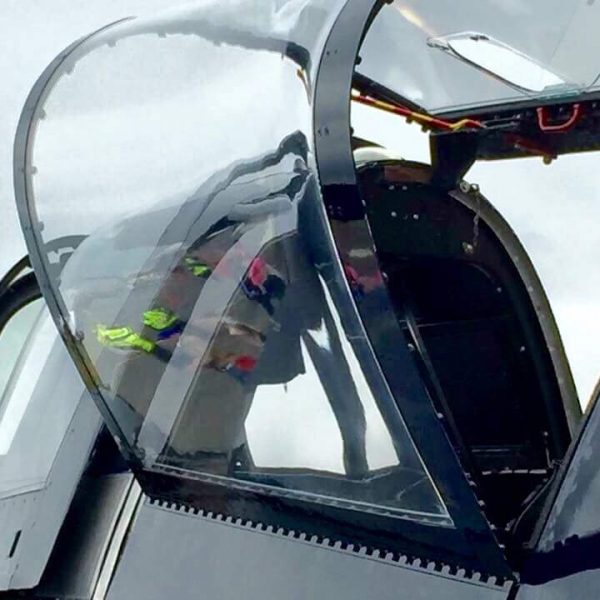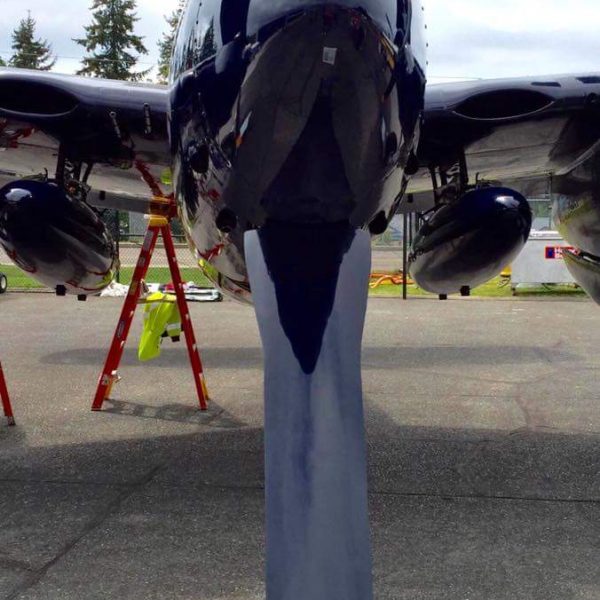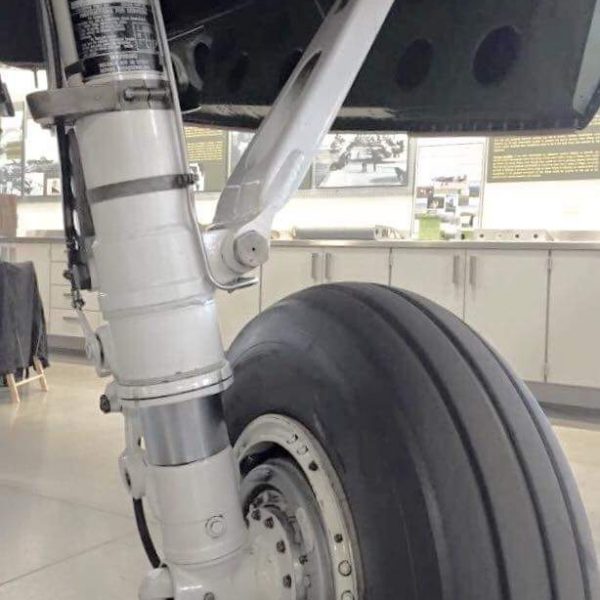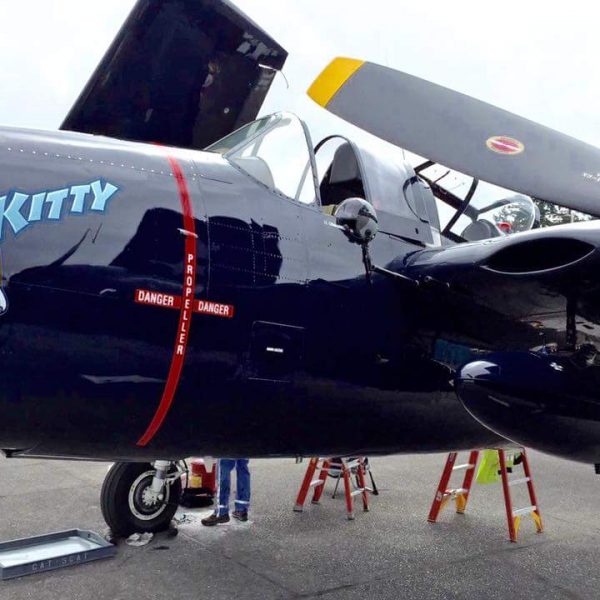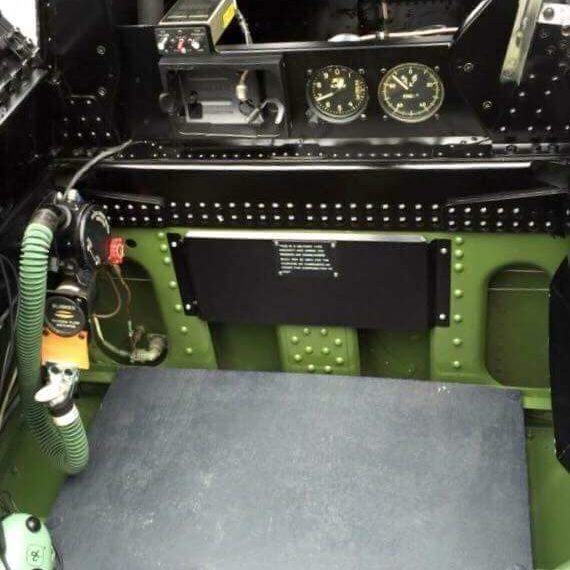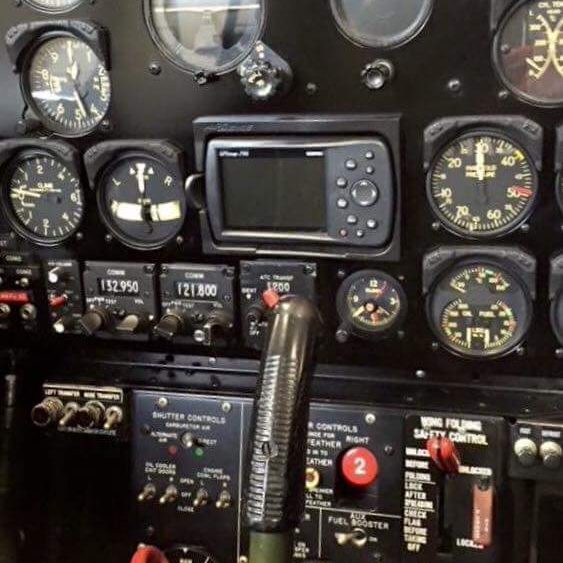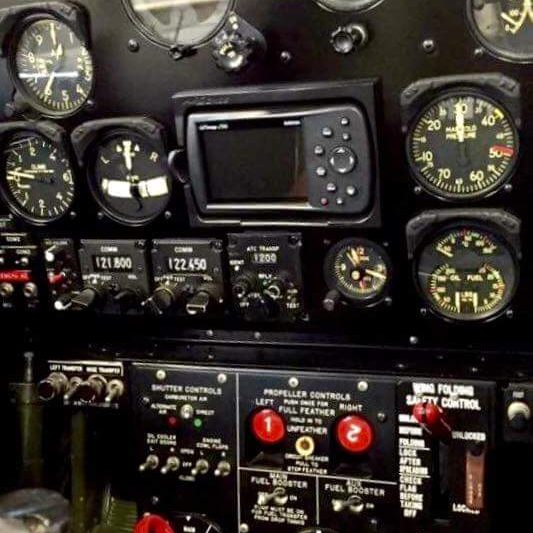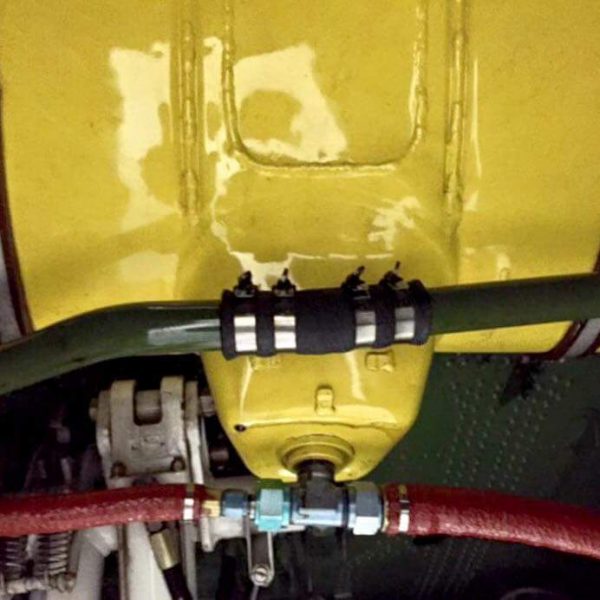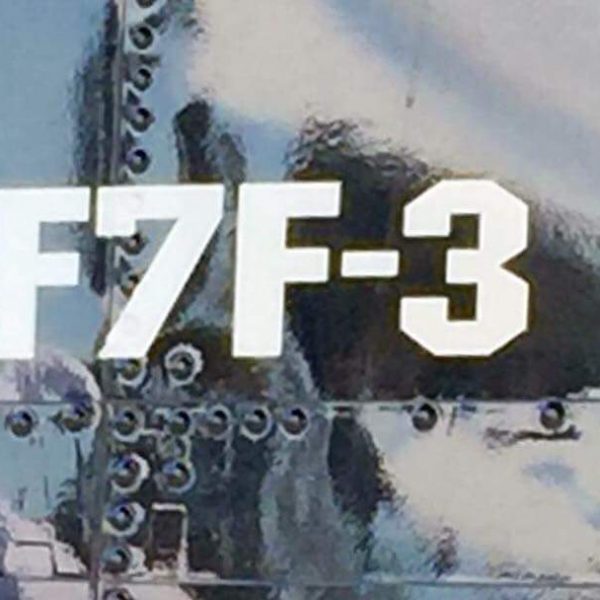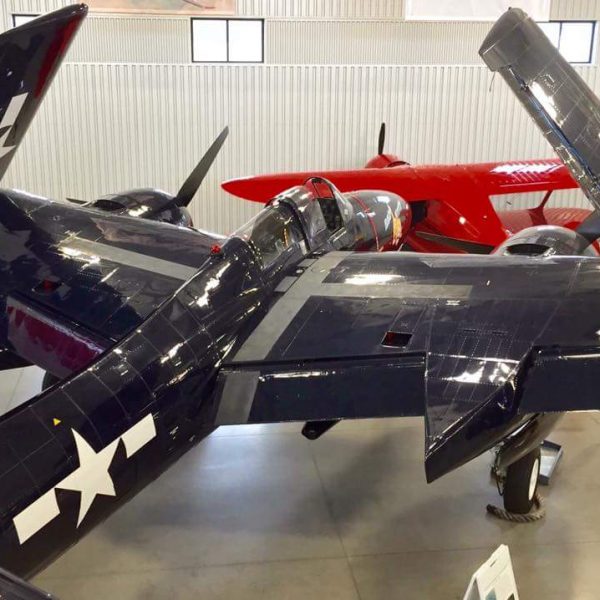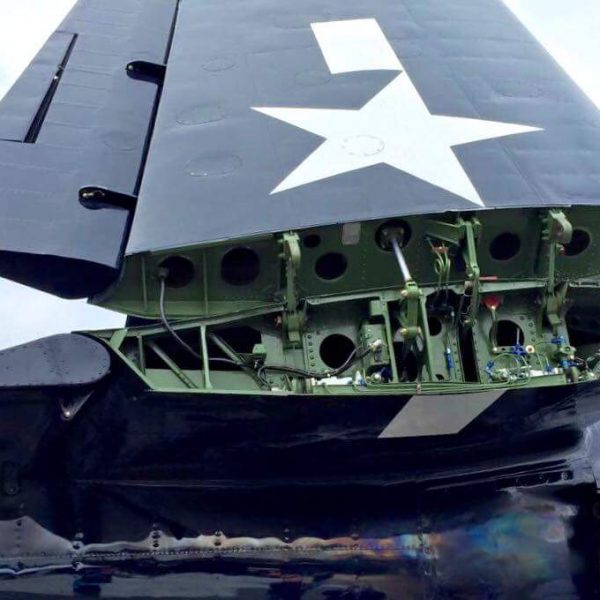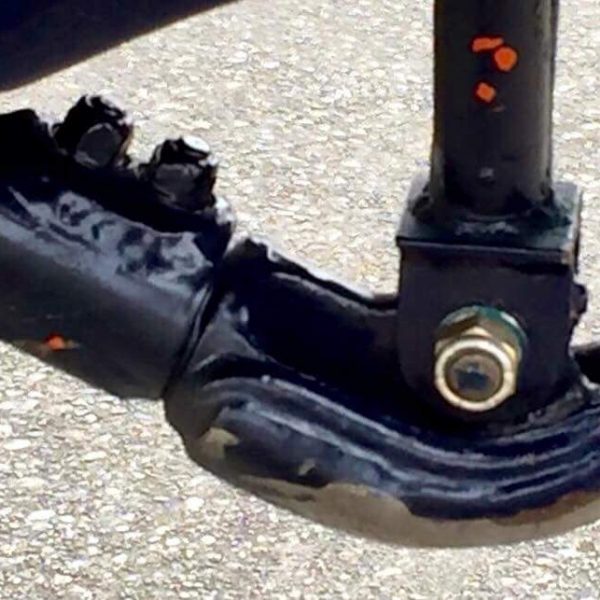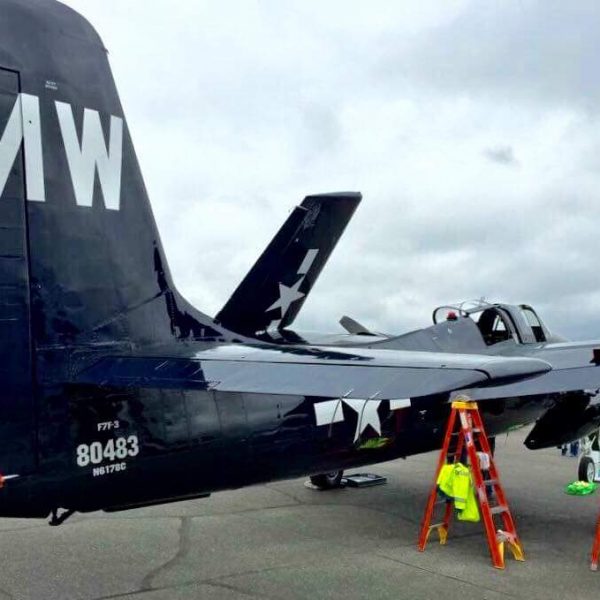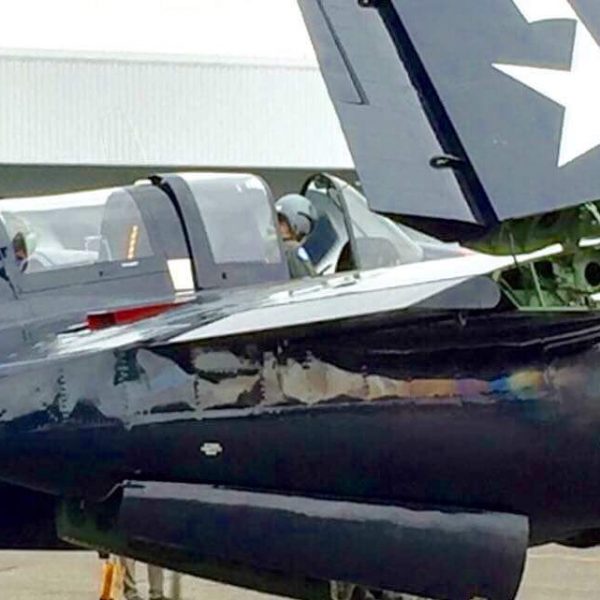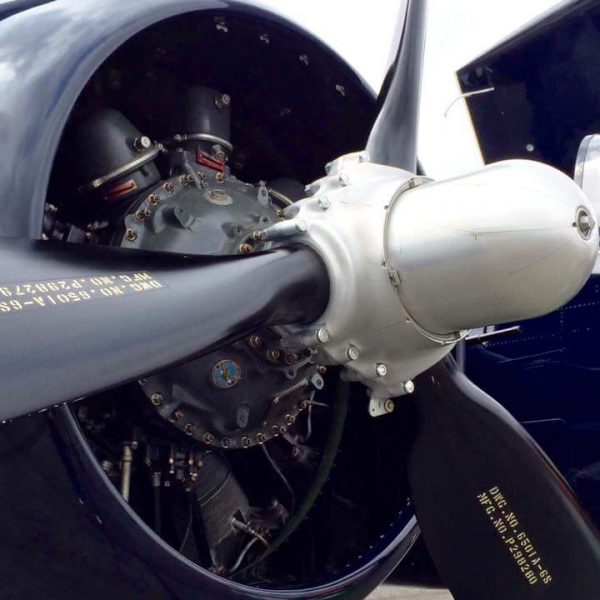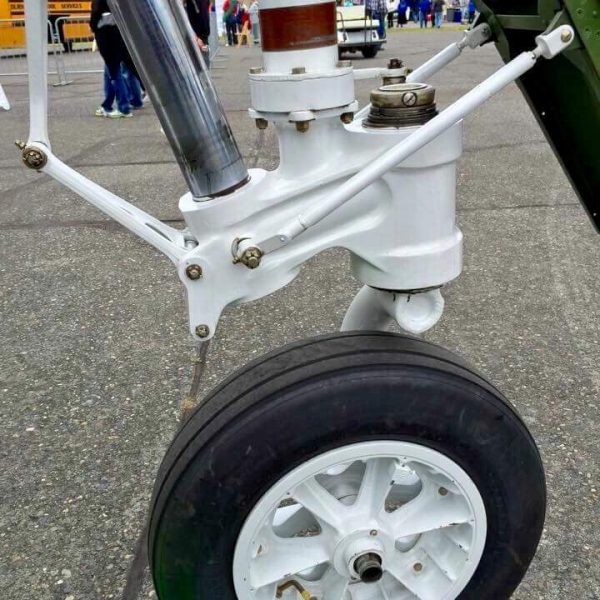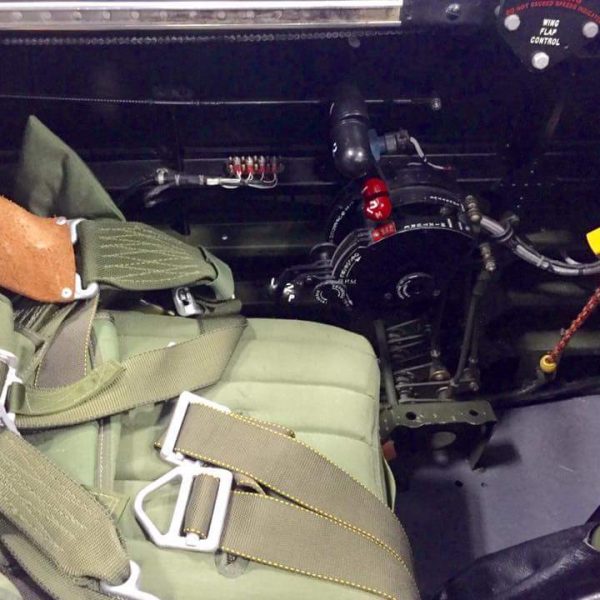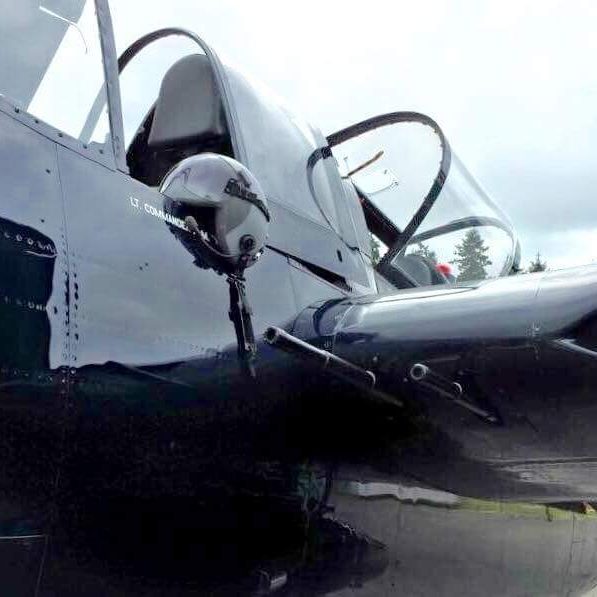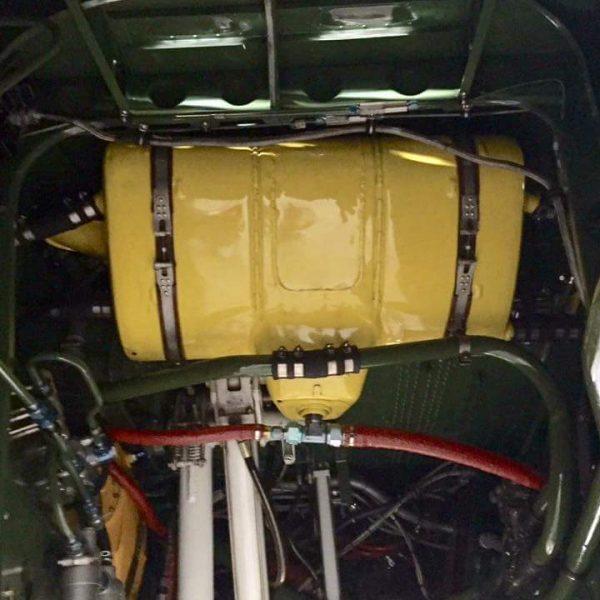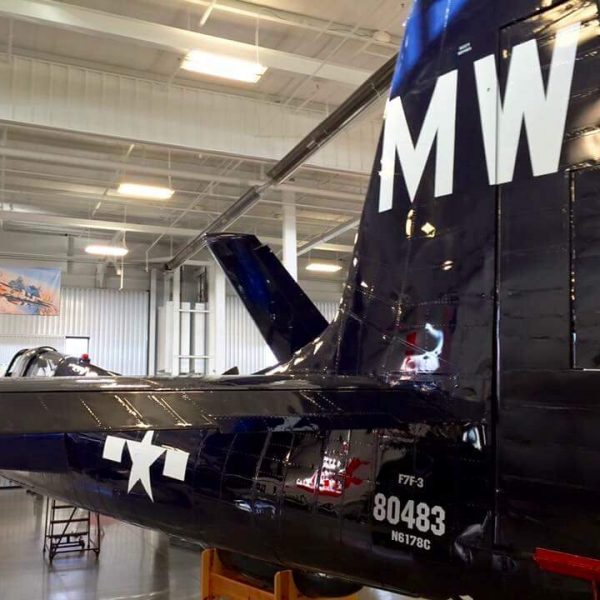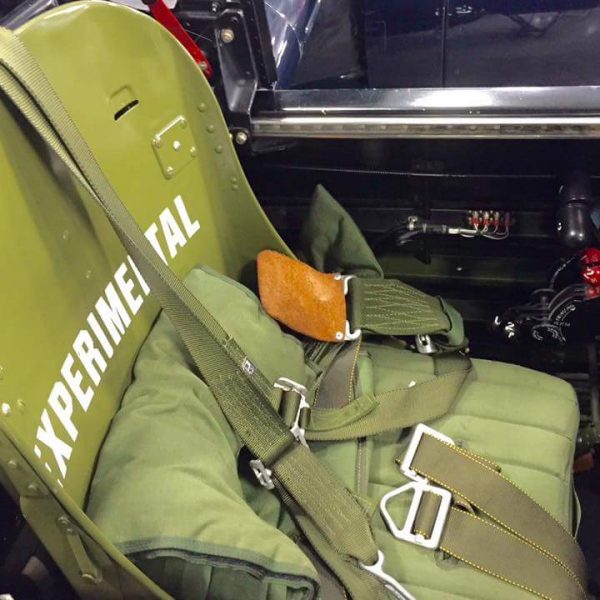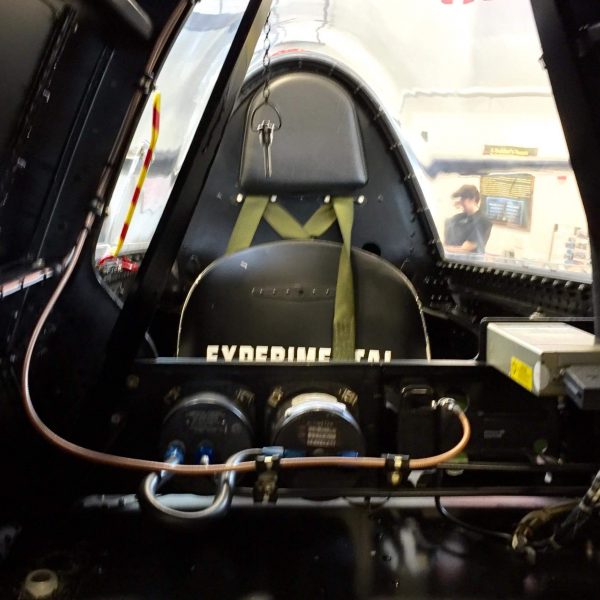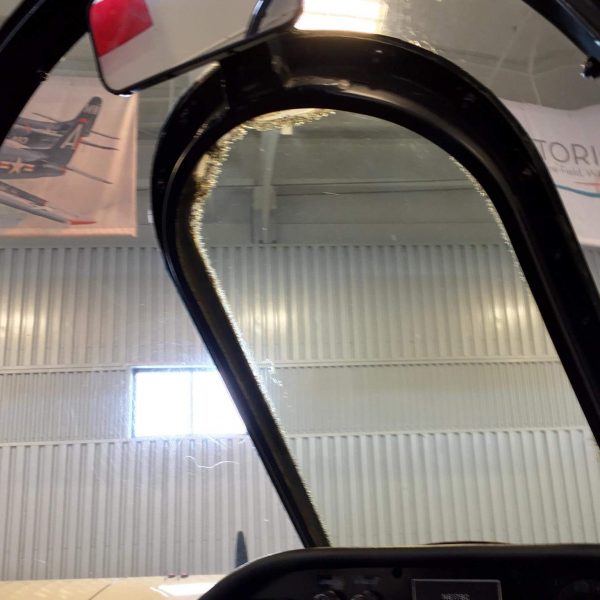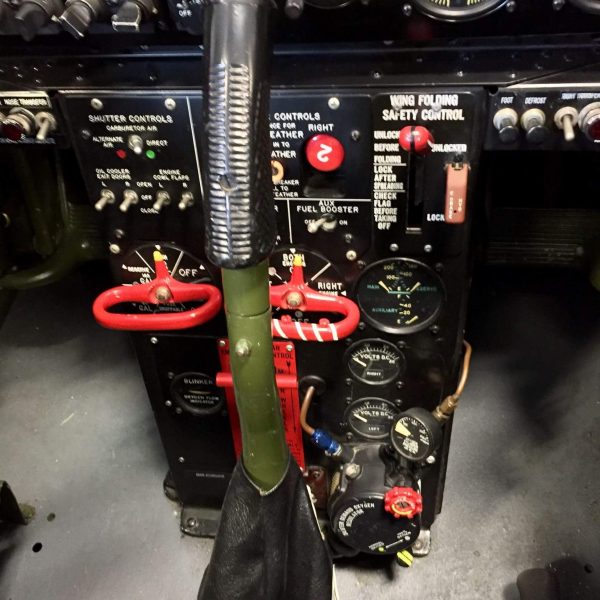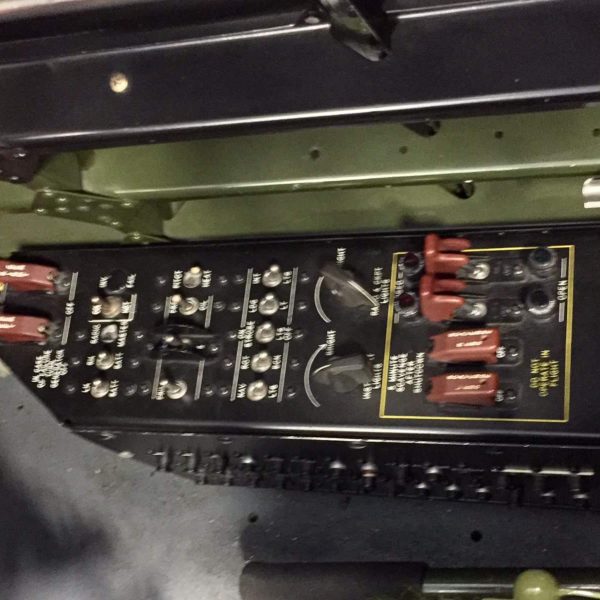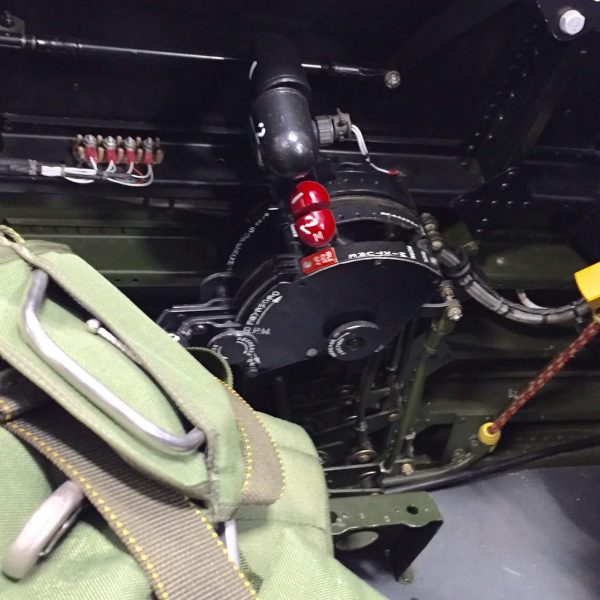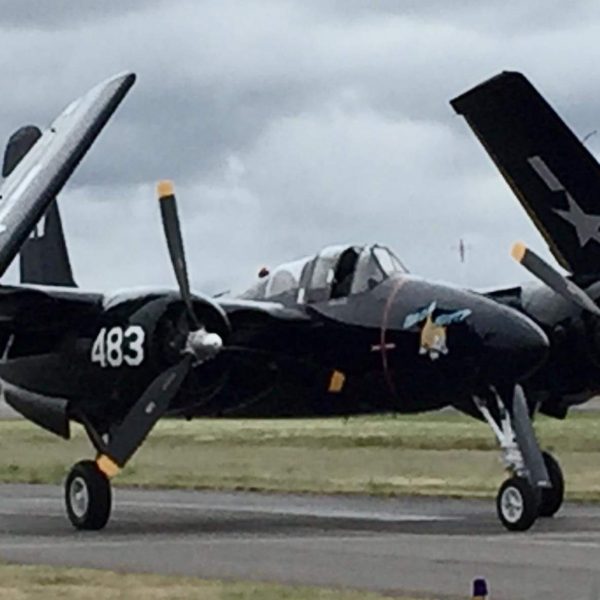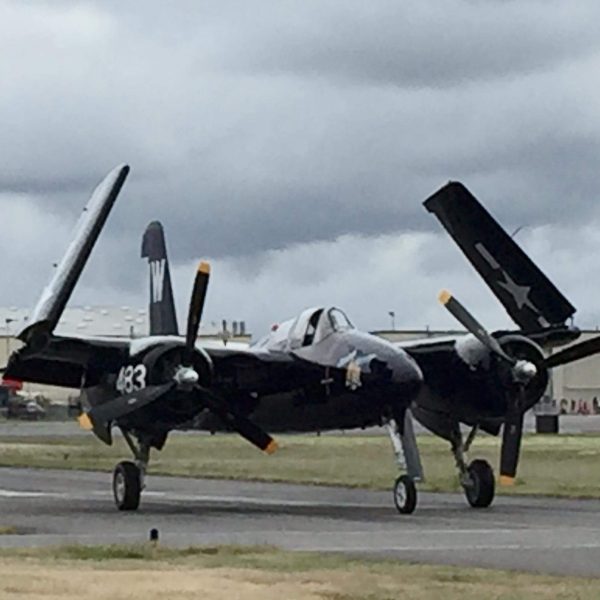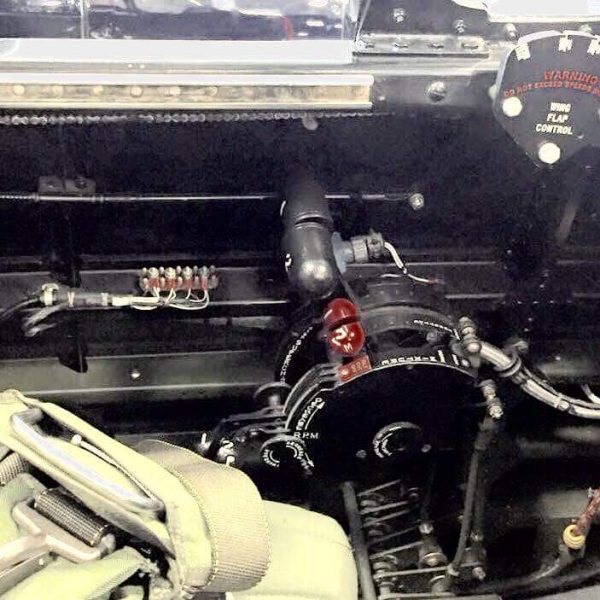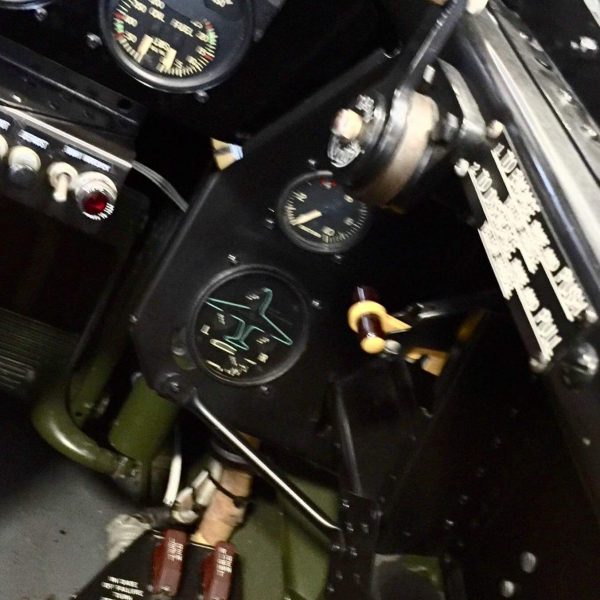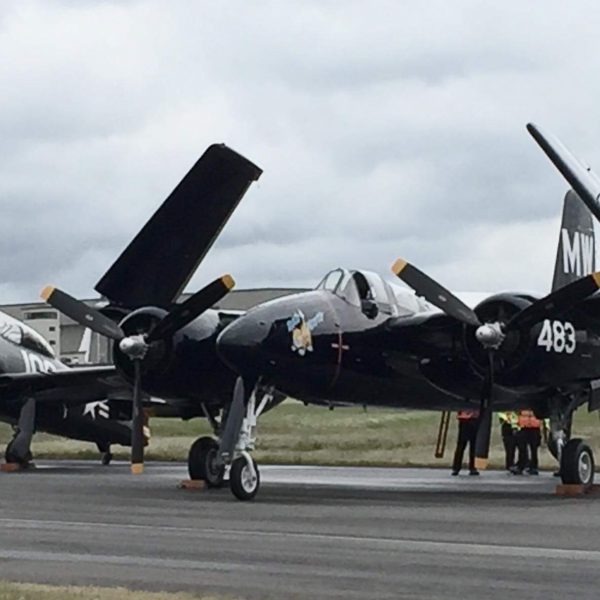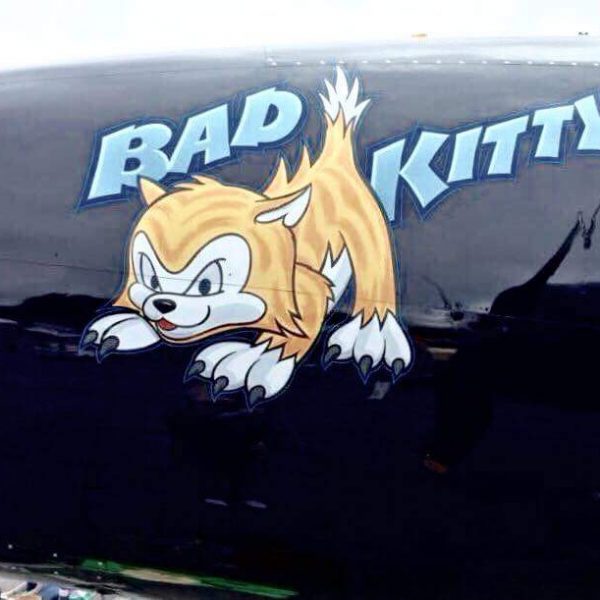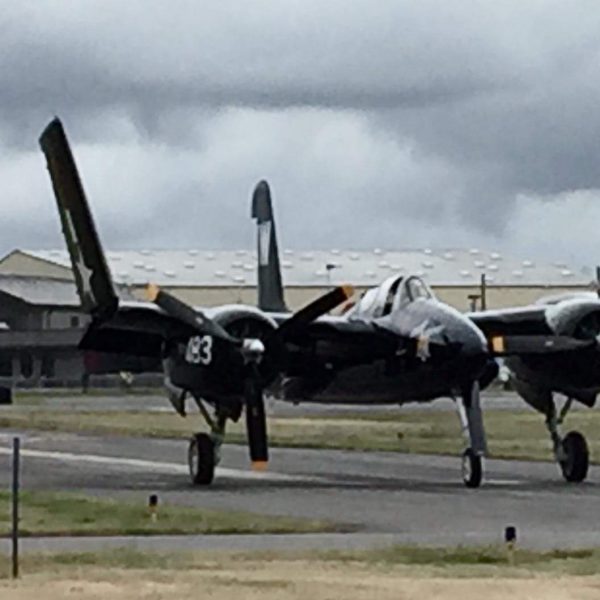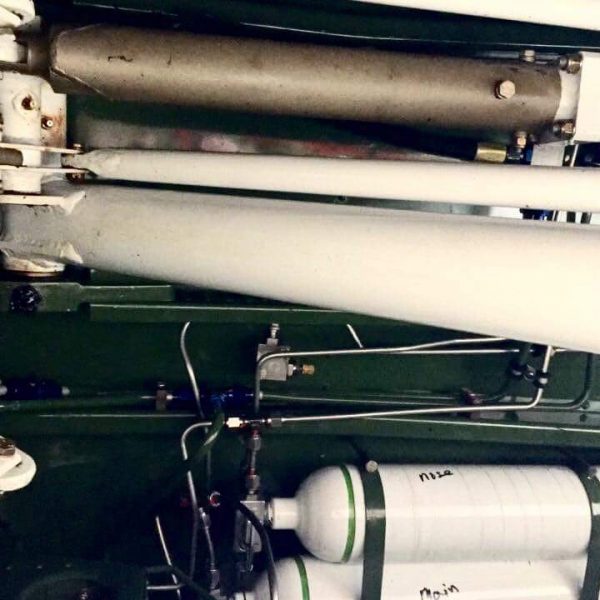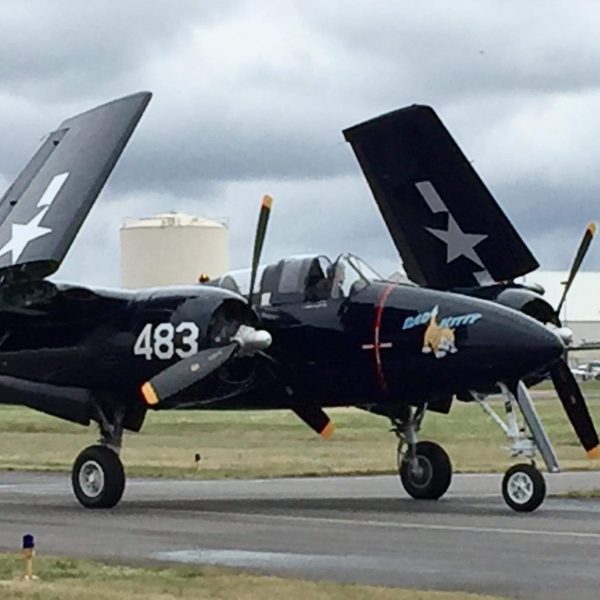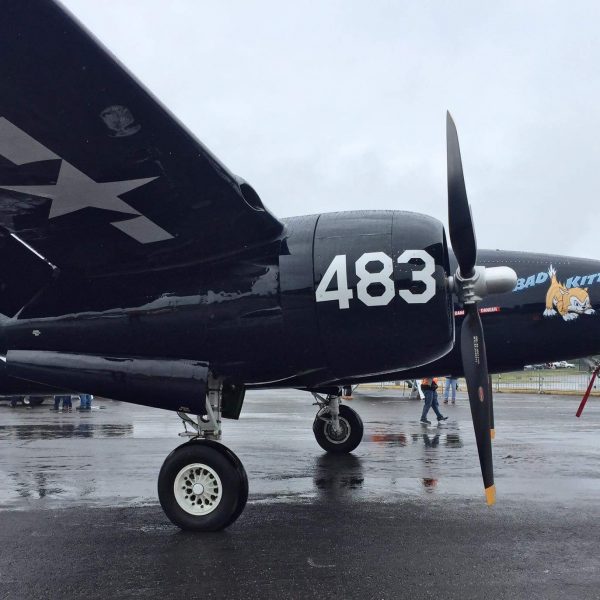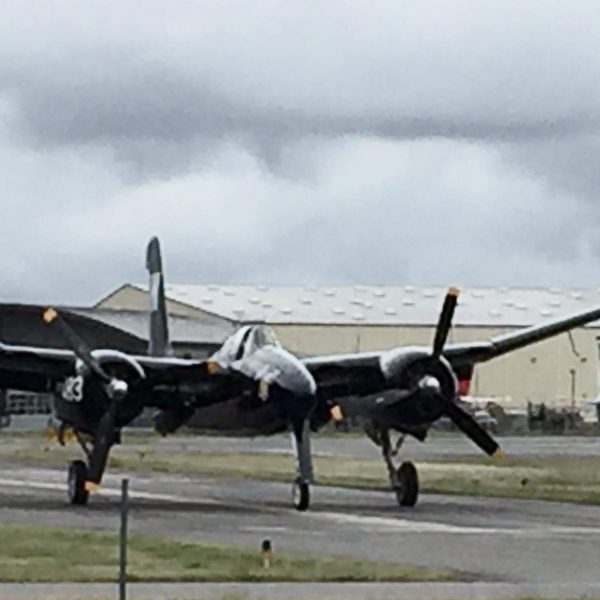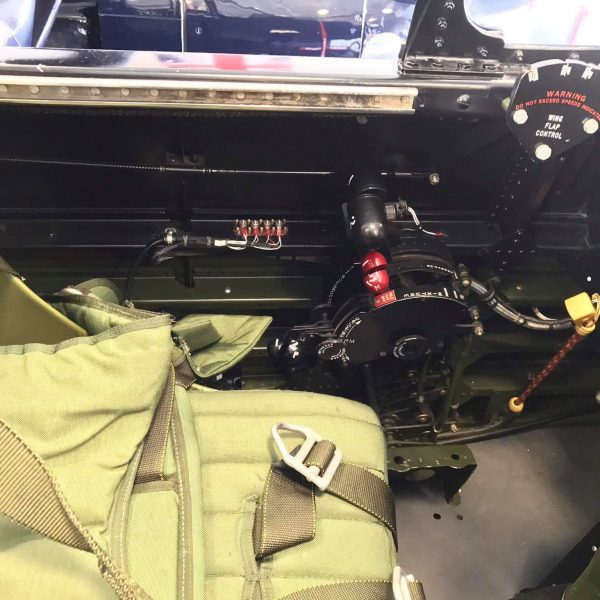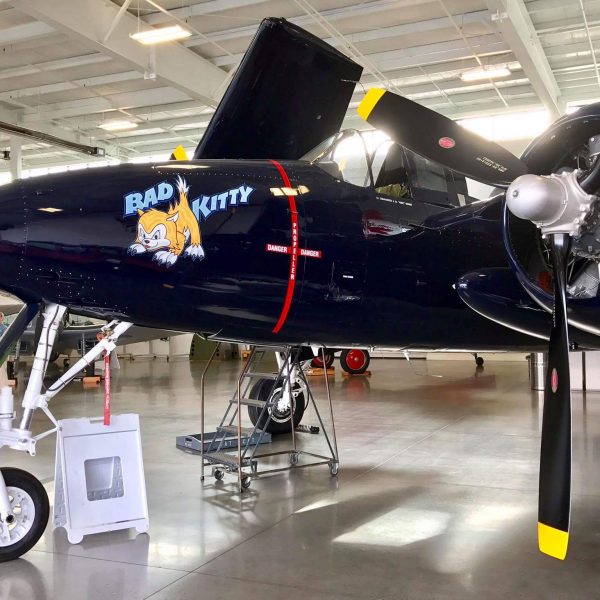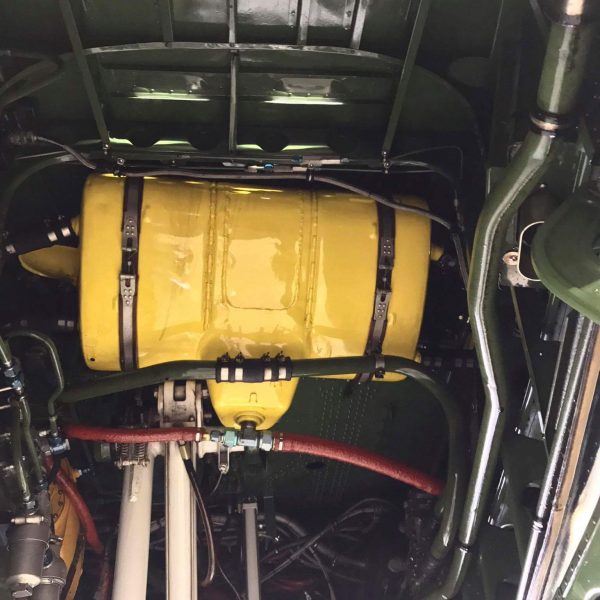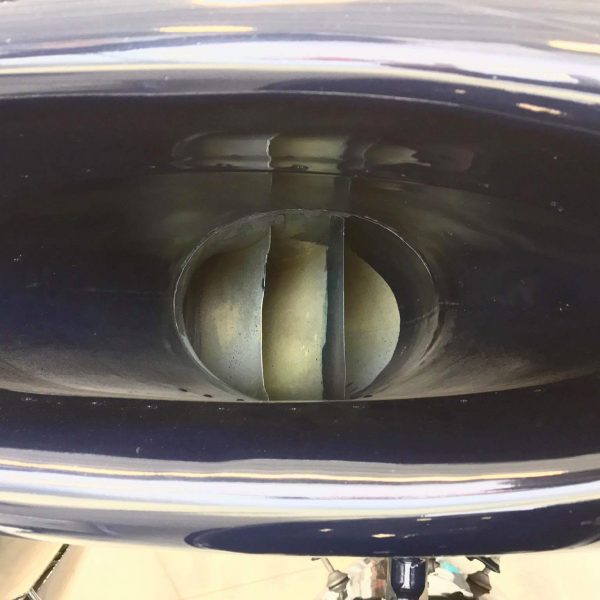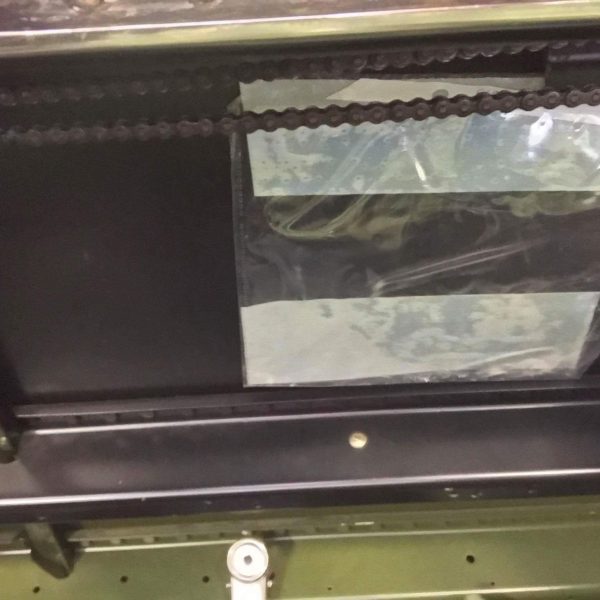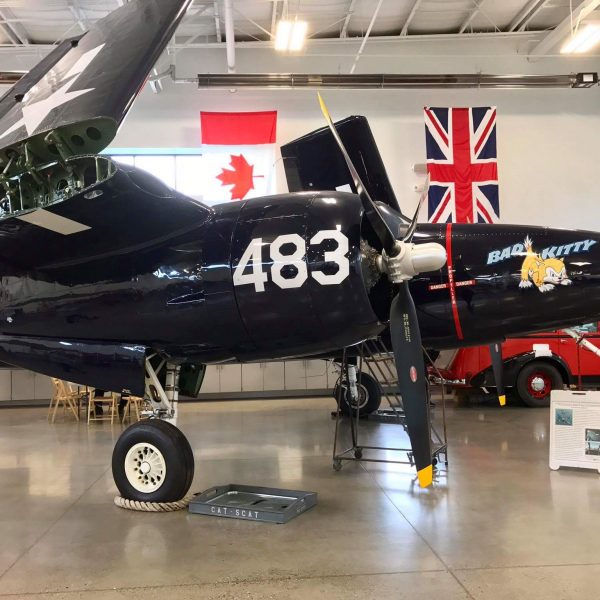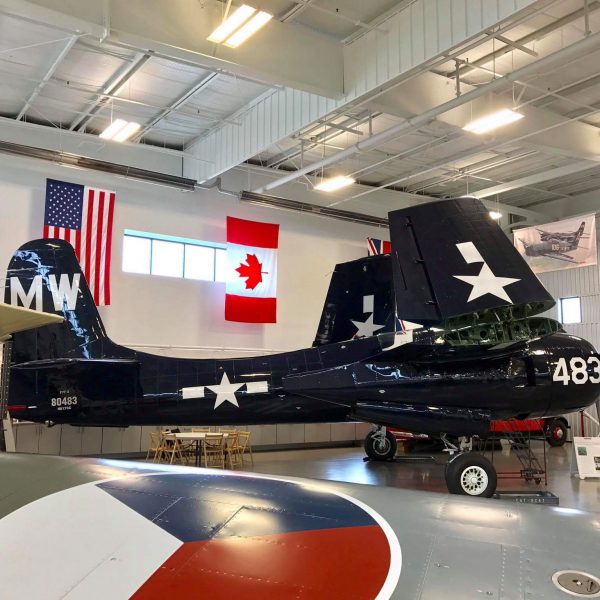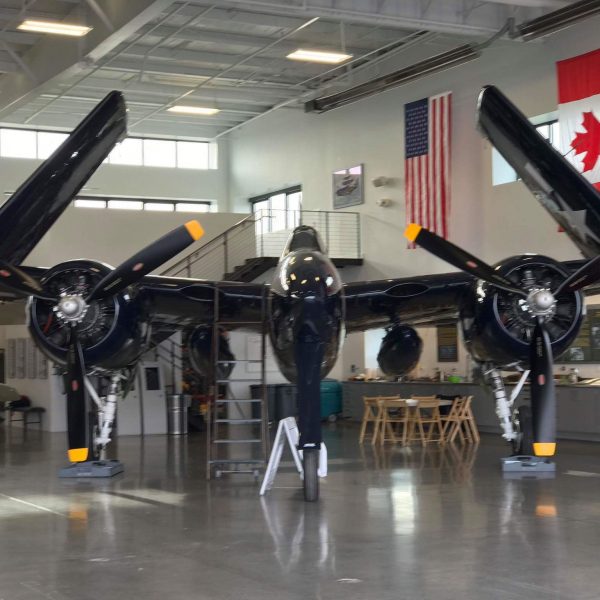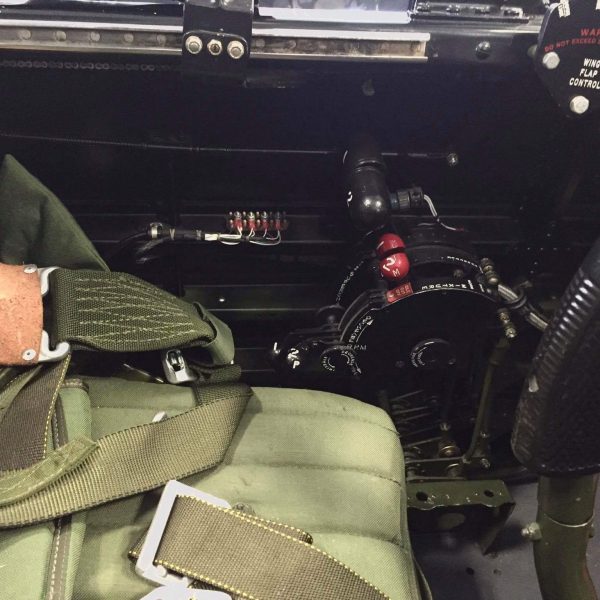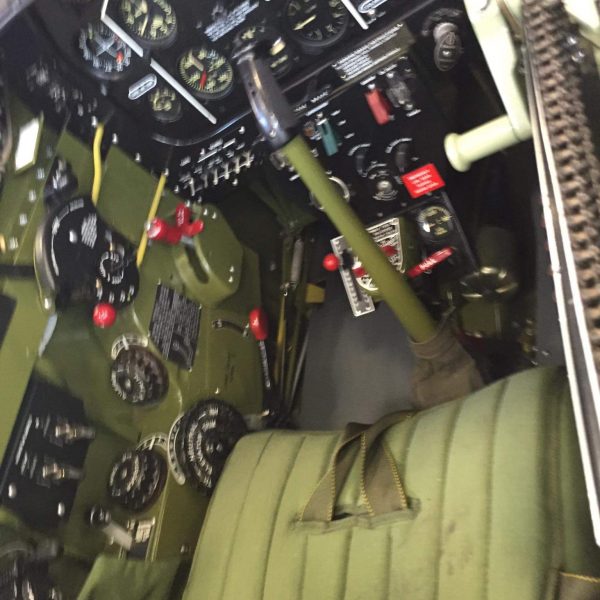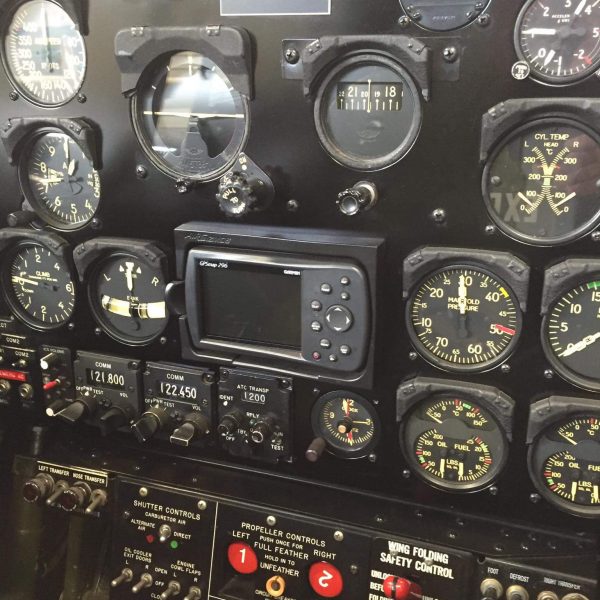Grumman F7F-3P Tigercat “Bad Kitty” Bu. No. 80483, Constr. No. C.225. This particular aircraft was delivered to the U.S. Navy on July 24, 1945 and was assigned to NAS San Diego. After 46 hours of non-combat flying time it was relegated to the boneyard at Naval Air Station Litchfield in Arizona, but became one of less than 20 Tigercats rescued from Litchfield. It has a history of civilian ownership as a tanker. For example, in 1962, SIS Q Flying Services out of Santa Rosa, California won a National Forest Service contract to provide airborne forest fighting services in California and Oregon, and that company subsequently acquired this aircraft (and several other Tigercats) and fitted it with a belly tank for fire retardant and it flew over 1,300 hours as a firefighter. In November 1988, it was shipped to Duxford in Britain and for a time was painted as a Tigercat of U.S. Marine Corps VMF-542. Historic Flight Foundation (HFF) acquired it in 2003. In 2016, it was sold to Comanche Maverick Air LLC (owned by the Thomas Friedkin trust) of Houston, Texas and is now at Planes of Fame in Chino, California. At the time of these photos of mine, it was painted as an F7F-3P with tail code “MW” of U.S. Marine Corps VMJ-1 which was a shore-based squadron in Korea beginning March 23, 1952, and in the name of pilot, aeronautical engineer and author Lieutenant Commander A.M. “Mike” Granat, United States Navy (Ret.), who flew over 30 aircraft including the Tigercat. While 1,500 Tigercats were commissioned, fewer than 500 were delivered, and, to my knowledge, is one of six left that are airworthy. My photos and my YouTube flight links and walkaround clip at HFF are below.
https://www.facebook.com/
https://www.facebook.com/
Initially nicknamed the “Tomcat” (but considered too suggestive), what became the “Tigercat” was designed by Grumman Aircraft as a carrier-based aircraft for the larger U.S. Navy Midway-class carriers. Design work began as early as 1941 but design delays (including an “unsatisfactory” tailhook design) kept the production model from appearing until April 1944. It was unusual in its time in that it had shoulder-mounted wings and tricycle landing gear (yet note the bulbous tail skid). Powered by two Pratt & Whitney R-2800-34W Double Wasp radial engines. Armed with four M2 cannons (two in each wing root) and four 0.50 cal. M2 Browning machine guns (two in each side of the nose). It could also carry 2,000 lbs. of bombs, rockets, or a torpedo (under the fuselage). While designed for larger carriers, the first were delivered to the U.S. Marine Corps for service from Okinawa and Guam by the spring/summer of 1945, including F7F-2N and F7F-3N variants (2-seat night fighters), and assigned to VMF(N)-531 (“Grey Ghost Squadron”) and VFM(N)-533 (“Hawks”), and flew some night CAP’s (Combat Air Patrols) before World War II came to an end. It did become the first twin-engine fighter to be used by the U.S. Navy. The Tigercat saw combat in Korea, and troops of the Korean People’s Army found it fearsome with all its firepower.

